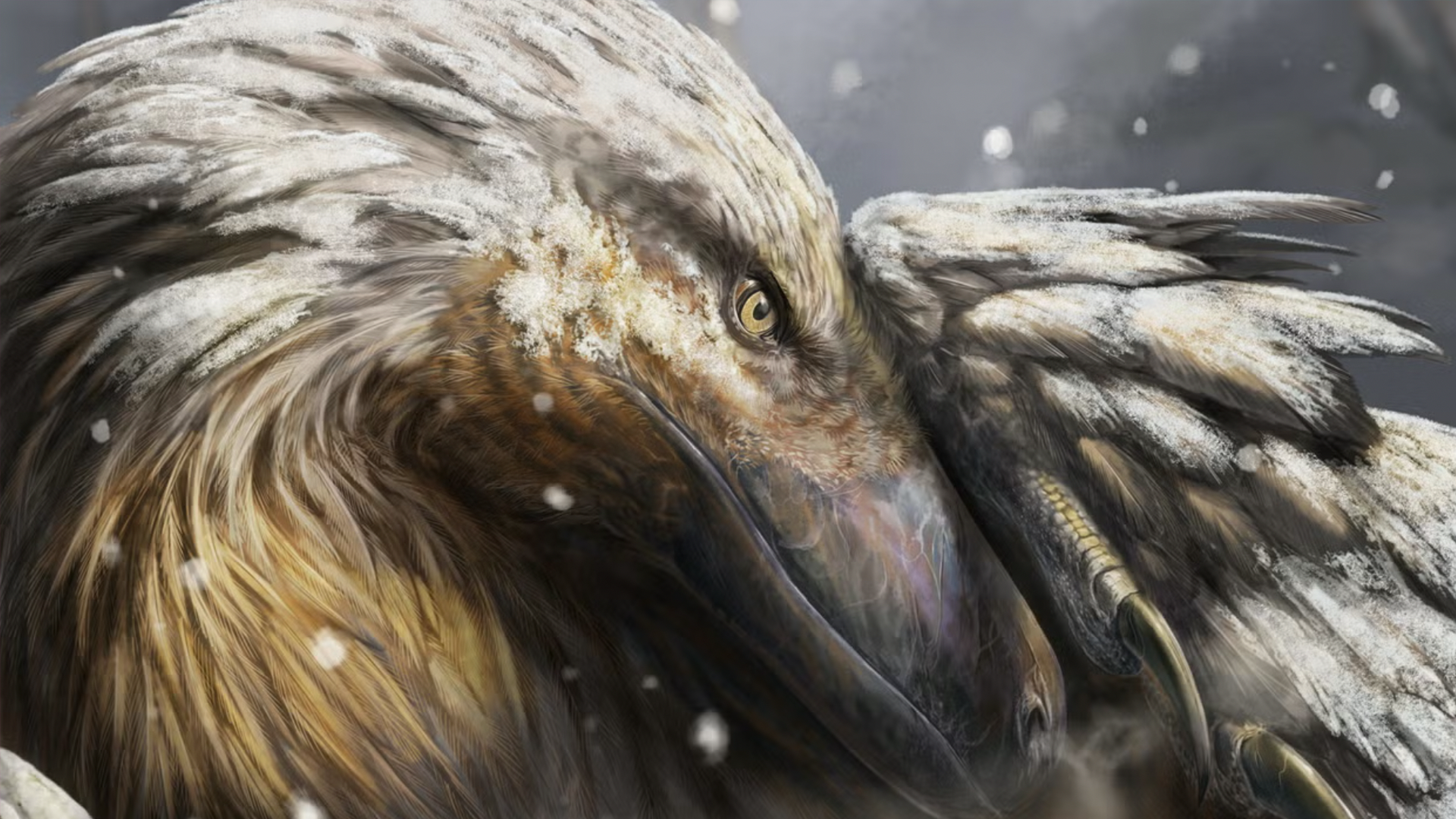Some dinosaurs may have become warm-blooded 180 million years ago

Dinosaurs were once thought to rely on the sun to stay warm, however they may have adapted to be able to do this themselves
- Published
Some types of dinosaur moved to colder climates around 180 million years ago which scientists say suggests they may have adapted to be warm-blooded around the same time.
All mammals and birds living today have the ability to manage their own body temperature - this means they are warm-blooded.
Reptiles, fish, insects, worms and amphibians need the sun to give them heat and are called cold-blooded.
In the early 20th century dinosaurs were thought to be cold-blooded but later it was discovered that some types may have adapted and developed an ability to generate their own heat instead.
Scientists have been looking into when this change happened.
What is adaptation in animals?
An adaptation is a physical or behavioural change that an animal makes to help them better survive in their environment - especially if it is changing.
For example, animals might adapt to be able to live in a different climate, or to be able to better find food or water.
More Dino-tastic stories:
- Published20 January 2021
- Published22 May 2023
- Published10 June 2022
Theropods (including T. rex) were one of the two groups found to have moved to colder climates
The study looked at which climates dinosaurs lived in during the Mesozoic era (the period of time lasting from 230 to 66 million years ago).
This was done through the team analysing 1,000 fossils, climate models, and geography.
From this the researchers found evidence that two of the three main groupings of dinosaurs, theropods and ornithischians, moved to colder climates in the Early Jurassic.
Researchers say the movement of these groups of dinosaurs to colder climates show they are likely to have adapted to become warm-blooded and this gave them a few advantages.
Dr Alfio Alessandro Chiarenza, of UCL Earth Sciences, said: "The adoption of endothermy (being warm-blooded) may have enabled theropods and ornithischians to thrive in colder environments, allowing them to be highly active and sustain activity over longer periods, to develop and grow faster and produce more offspring."
The same study found that sauropods, including brontosaurus and the diplodocus, kept to warmer areas of the planet.
Read more:
- Published14 February
- Published19 September 2023
- Published10 June 2023
